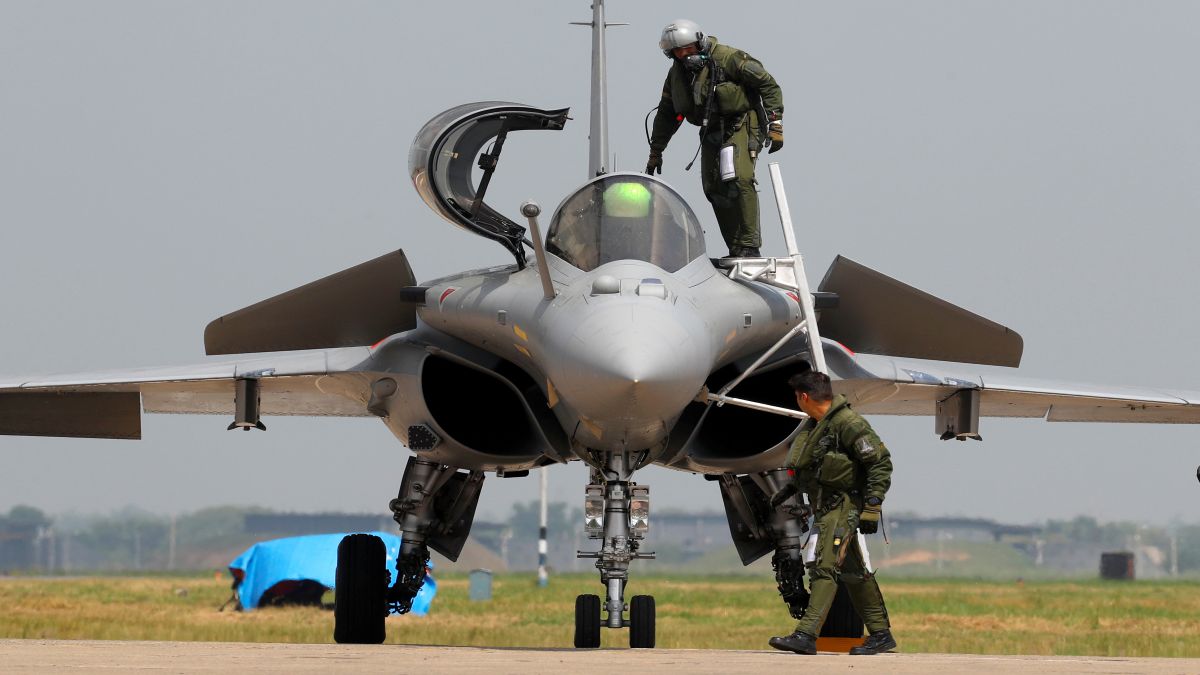Countries need a strong and mighty air force. This was amply proven during India’s Operation Sindoor that a more advanced air force could decide the outcome of a war.
And it seems that India has been paying heed to this as a new ranking reveals that the country outranks China when it comes to air superiority. As per the latest World Directory of Modern Military Aircraft (WDMMA) rankings, the United States continues to dominate, followed by Russia. The rankings reveal that India is next with China following it.
Defence analysts note that India’s rise signals a dramatic recalibration in Asia’s strategic balance.
The rankings are…
According to the ‘World Directory of Modern Military Aircraft’ (WDMMA), which is an organisation that publishes rankings of global air forces, the United States has the most dominant air force with a TruVal Rating (TVR) of 242.9. The TVR ranking is calculated not just on the number of aircraft in the fleet, but also takes into consideration factors such as attack and defense capabilities, logistical support, modernisation and operational training.
The US is followed by Russia with a TVR of 114.2. India comes in third with a TVR of 69.4 whereas China is fourth with an evaluation of 63.8. The other countries with the most air superiority are Japan (58.1), Israel (56.3), and France (55.3).
India vs China’s air power
As per the WDMMA rankings, India is ahead of China by a slight margin — 69.4 compared to 63.8. According to WDMMA, the Indian Air Force boasts of 1,716 aircraft whereas 3,733 aircraft.
As per their analysis, India’s Air Force is a balanced unit — 31.6 per cent of its Air Force are dedicated to fighters, followed by 29 per cent helicopters and 21.8 per cent trainers. Meanwhile, fighter jets make up 52.9 per cent of China’s People’s Liberation Army Air Force (PLAAF) and 28.4 per cent trainers.
Today, India’s Air Force India operates a fleet of French-made Rafales, Mirage 2000, Russian Su30s, MiG-29, and Tejas, among others. It recently retired the last of its Soviet-era MiG-21 fighter jets , after these planes served for six decades. In fact, inducted in the 1960s, the needle-nosed MiG-21 formed the backbone of the Indian Air Force and saw action in wars with Pakistan and China as well as in the Balakot air strikes.
India has drawn up an ambitious plan to induct more than 600 jets over the next two decades, a large number of them being Light Combat Aircraft variants. This includes 180 LCA-Mk1A, over 120 LCA-Mk2, 114 MRFA and at least 120 AMCA.
Defence Minister Rajnath Singh in a recent interview said that India is talking to partners for the likely import of a small number of fifth gen fighters as an interim measure while the AMCA development continues. The option is between the Russian SU-57 and American F-35.
On the other hand, the People’s Liberation Army Air Force (PLAAF) aka the Chinese air force has a vast fleet of planes such as the fifth-generation J-20 and J-35 stealth fighter jet, and a recently unveiled sixth-gen fighter jet (the world’s first), unofficially dubbed the J-36.
However, as seen during Operation Sindoor, India’s air power outperformed Pakistan’s, which is heavily dependent on Chinese imports . India’s airstrikes, for instance, successfully hit multiple targets within Pakistan, meaning the missiles penetrated Pakistani air defences reliant on Chinese surface-to-air missiles.
The Chinese air-defence systems “do not appear to have been as effective as the Pakistan Air Force (PAF) would have hoped,” Bilal Khan, founder of the Toronto-based Quwa Defence News & Analysis Group, told the AFP news service at the time of the military hostilities between India and Pakistan.
Moreover, Pakistan deployed Chinese-made J-10C fighter jets armed with PL-15E air-to-air missiles and HQ-9 long-range surface-to-air missile systems during the four-day fight. But, this proved futile. The fighter jets launched multiple missiles at Indian targets, but it didn’t cause significant damage.
The Indian Air Force’s superiority was also clearly displayed based on Pakistan’s losses. Indian Army’s Director General Military Operations (DGMO), Lt Gen Rajiv Ghai recently said that Pakistan lost over 100 military personnel, as well as a minimum of 12 aircraft during the four-day conflict.
According to a Newsweek report, the reason India edges ahead of China is because while Beijing continues to invest heavily in technology and fleet modernisation, it is factors such as training, close-air support, and specialised bomber units that impact its overall ranking.
Why these rankings matter
Air power remains a decisive factor in global military strategy. Recent military conflicts, be it the Russia-Ukraine war, or the Iran-Israel 12-day battle or even India and Pakistan, have highlighted the need for a country to have aerial superiority.
For instance, Russia has not achieved air superiority over Ukraine in more than three years of fighting. On the other hand, Israel’s Operation Rising Lion in June achieved air superiority over Iran in less than four days, an achievement made more impressive by the fact that Tehran is nearly 1,000 miles from Israel’s nearest airbase.
The rankings, which are different from the Global Firepower ratings, also signals a shift in power dynamics, namely in South Asia. India’s position as a growing air power will likely influence future strategic and defence planning worldwide.
With inputs from agencies
)